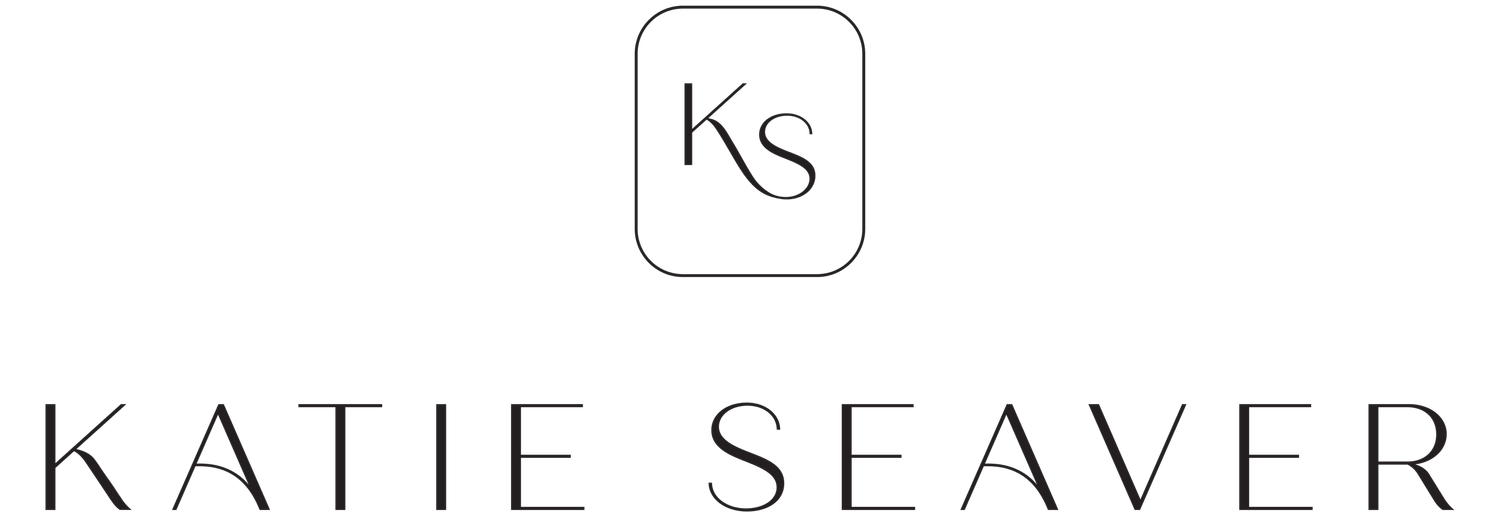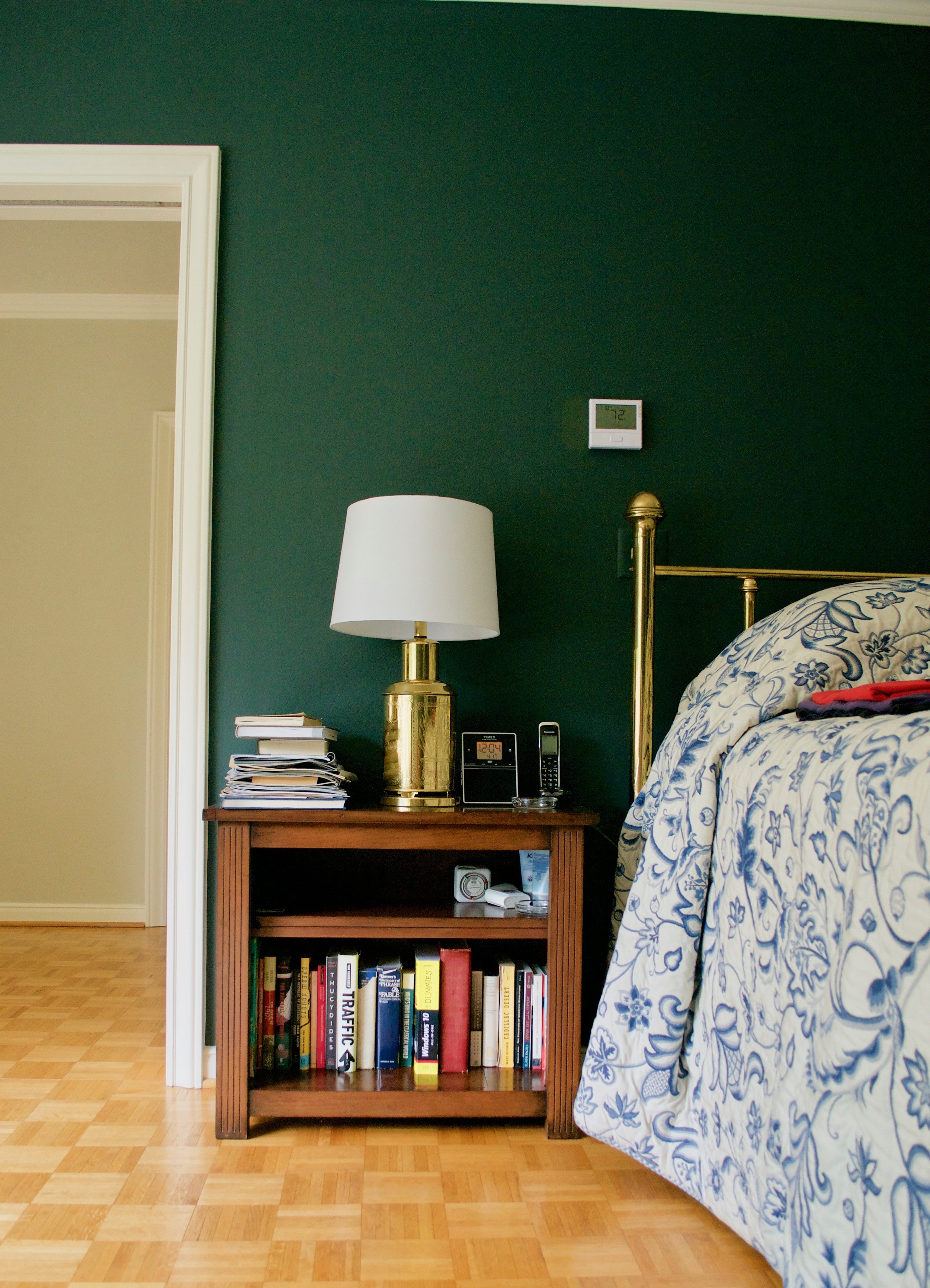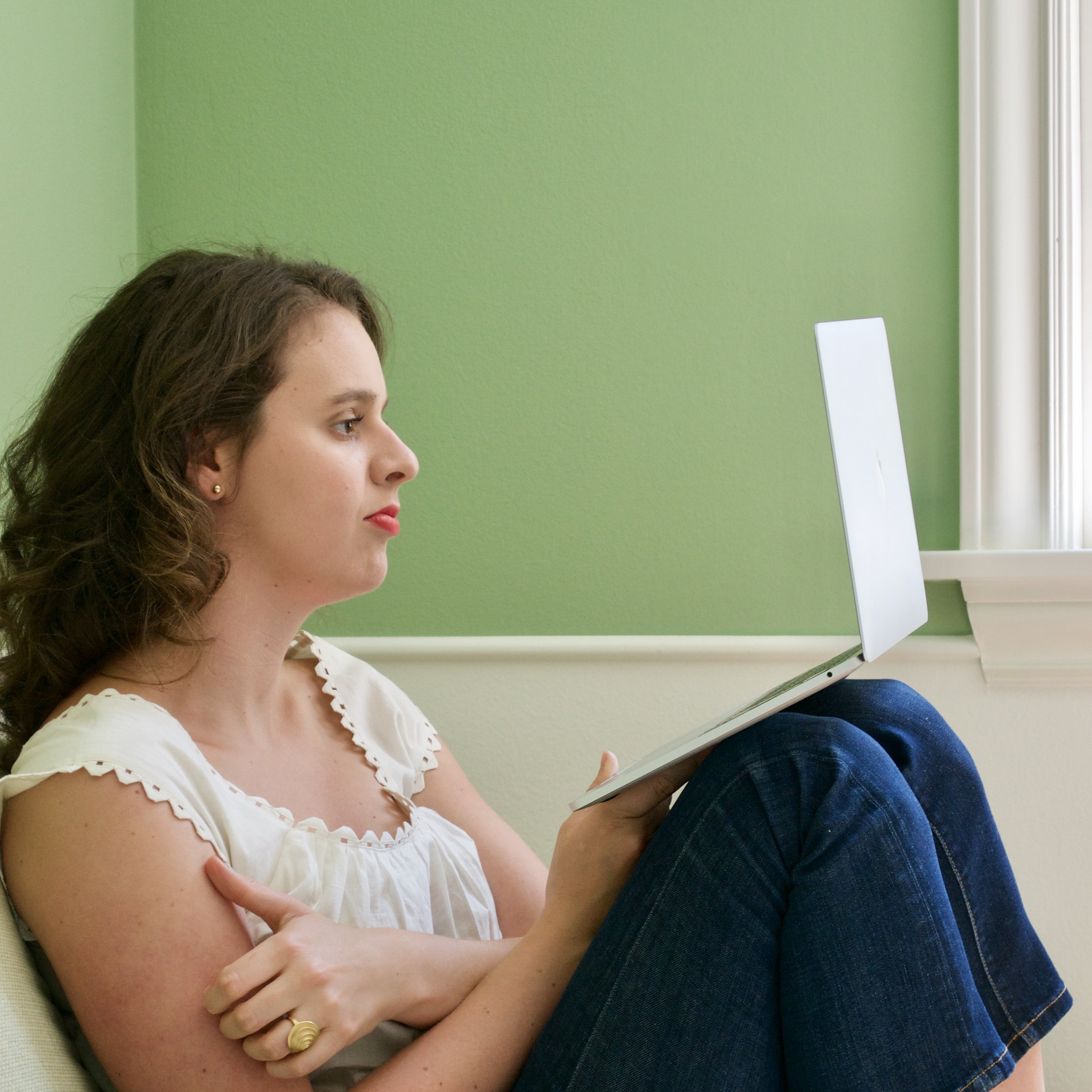Blog
Let's talk about historical beauty standards (Body Projects, Part 1)
Let’s talk about “body projects.”
You know, projects like “lose 10 pounds,” “finally fit into those jeans,“ “have better hair” or “improve my skin.”
The motivation behind a “body project” is that our body is representative of our identity.
That idea feels so obvious in 2021 that it’s almost not worth saying. Of course, our bodies are intimately tied to our identities. It’s who we are — literally!
And yet, Joan Jacobs Brumberg, a historian at Cornell University, argues in her book The Body Project that this emphasis is actually relatively new from a historical perspective.
This is not to say that adolescent girls had zero interest in appearance in, for example, the Victorian era. But, Brumberg argues, parents in that era “tried to limit their daughters’ interest in superficial things, such as hairdos, dresses, or the size of their waists, because character was considered more important by both parents and the community.”
These parents firmly believed, she argues, that “character was built on attention to self-control, service to others, and belief in God — not on attention to one’s own, highly individualistic body project.” (emphasis mine).
Of course, you could debate the merits of those particular values. But let’s compare self-improvement-oriented diary entries from adolescent girls from two different eras:
From 1892:
“Resolved, not to talk about myself or feelings. To think before speaking. To work seriously. To be self-restrained in conversations and actions. Not to let my thoughts wander. To be dignified. Interest myself more in others.”
Now here’s one from 1982:
“I will try to make myself better in any way I possibly can with the help of my budget and baby-sitting money. I will lose weight, get new lenses, already got new haircut, good makeup, new clothes and accessories.”
Read those two diary entries again.
Like, really read them.
Here’s my summary:
1892: Work on being a person who lives true to my values.
1982: Work on being a person who has an attractive image.
As Brumberg puts it: “Like many adults in American society, girls today are concerned with the shape and appearance of their bodies as the primary expression of their individual identity.” (emphasis mine).
Really think about what Brumberg is saying:
Our bodies don’t have to be the primary expression of our individual identity.
Even though that might feel impossible in 2021 — it’s actually relatively recent, from a historical perspective.
In my next essay, I want to talk about some fascinating historical reasons why this shift occurred, but today, I just want you to let this really sink in:
How would your life be different, if you spent your free time resolving to “be dignified.”
Or “interest yourself more in others.”
Or even “to think before speaking.”
How would your life be different if the key to your identity was not your appearance, but how true you were to your values?
Did you like this essay? Sign up for my newsletter to get helpful + encouraging essays like this every Sunday morning. It’s free! :)
As always, I’m rooting for you. You’ve got this.
Katie
On deep and meaningful connections + going first
Here’s something that took me forever to learn:
Sometimes you have to go first.
As in: If you’d like a relationship — or even just a conversation — that’s meaningful, one in which you feel seen and like you really connect to the other person… you may have to go first.
“Going first” means that you choose to be honest and even a little vulnerable about how you’re doing or what’s on your mind.
It means that when someone asks you “how’s your week been?” or “what’s on your mind lately?” you give a deeper answer — not just the surface-level, small-talk answer.
This isn’t to say that you should spill your guts on the table! But it is to say that you share something meaty, something authentic and that could lead to a deeper conversation, if the other person chooses to engage.
Here’s another way of saying it:
Have you ever had an interaction where, completely by surprise, you felt really connected to the other person?
Often that’s because the other person went first. They chose to take the conversation to a deeper place. It’s so fun when the other person does this. Now that we’re being open, it’s safe for me to be open, too! Whew!
But if we want to have connections that feel deeper, more authentic, and more intimate, we can’t always wait for the other person to take us there. We will sometimes have to go first.
…
Whenever I coach a group (like the Dessert Club Mastermind), my top priority is to “go first.” I’ll start each session by sharing how I’m doing, or what it was like for me to engage with the issues we’re discussing. I want to set the tone for authenticity, vulnerability, and depth for the group, so everyone else feels more comfortable “going there,” too. And I’m always amazed by how people really do “show up” emotionally, once I’ve set that tone.
(It’s also worth saying that sometimes, even if you go first, the other person won’t engage. That’s okay — again, you haven’t spilled your guts on the table, you’ve just given them an opening to depth by sharing something true about yourself or how you interpret the world.)
Here’s another way of saying “you have to go first”: Look for opportunities to go deep.
If you look for opportunities to go deep with other people — to be authentic and real — you’re more likely to find them.
You’ll both be glad you did.
You’ve got this.
Katie
Did you like this essay? Sign up for my newsletter to get helpful + encouraging essays like this every Sunday morning. It’s free! :)
Struggle to make decisions or know what you want? The brain has limitations - and here's what to do instead
A lot of my clients come to me with a problem that they have trouble describing. They’ll say something like: “my life looks pretty decent on paper, but it doesn’t feel right to me.”
They’ve often put off getting support because, well, is this a real problem? Or are they just being whiny?
But eventually, they can’t ignore it. What was once a subtle feeling of “not-right-ness” has gotten stronger and stronger. They’ve started to feel anxious or sad or insecure — like they’re trapped, or going through the motions in their lives. They sometimes wonder if they should quit their jobs or break up with their partners — do I just need to make a big, dramatic change?
They’ve thought about the issue from all sides…
…And thought
…and thought
…and thought about it.
There are many different things that can be useful in these types of situations. A coach can typically see things about you that you may find it hard to see on your own — and make suggestions that are tailored to your particular blind spots, or opportunities for growth.
But there’s one thing that I often tell them, and I thought I might tell you, too:
The brain has serious limitations in helping to chart the course of your life.
I say this as someone who was, for many years, a proud, card-carrying member of the “brain-first” club. I graduated with high honors from an Ivy League university, and then I worked at the top management consultancy in the world, for goodness sake! I was very focused on brainpower.
And yet…
And yet, even then, I felt a bit…lost. My life looked pretty good on paper, but I sometimes felt like the professional decisions I was making were a bit…un-anchored. I could make a pro-con list that would say one decision was right, and then make a pro-con list that would point me in the exact opposite direction.
I wanted a life that felt right to me, not just looked right.
So I worked with a coach. One thing that my coach taught me was that the brain has a tendency to spin. The brain can make arguments for just about anything — which is precisely why I was having that pro-con list problem!
…
I had, over the course of my life, heard other phrases. Phrases like:
Trust your gut.
Listen to your heart.
My body wanted (or didn’t want) that.
I’m sure there were moments where I “went with my gut.” But, if I was being honest, phrases like that seemed a little too woo-woo for me. I had a smart brain — I needed to use it.
My coach pointed me in a different direction.
She didn’t suggest turning off my smart brain. She just pointed out that there were other skills — ways of connecting to my “truth” that felt slower, deeper, and more true. Ways of knowing where there wasn’t so much fluttering + doubt. It involved connecting more deeply to my body, figuring out how to calm my nervous system, and listening in a different way.
(And to geek out for a moment: as it turns out, these kinds of “knowing” actually do use the brain, just often not the Prefrontal Cortex where most of our conscious thinking occurs. More on that here.)
…
So I wanted to tell you, in case you need it today:
Your brain is fabulous. Thank goodness for that smart Prefrontal Cortex of yours!
But also: Your conscious brain has limitations for charting the course of your life. In fact, it causes you to spin more than you really need to.
I’m in your corner rooting for you.
Katie
p.s. if you’d like to explore some different ways to chart the course of your life…may I recommend life coaching? It was very potent for me. If you’re ever interested in working with me 1:1, you can learn more about my approach here.
Or the archives of my blog are filled with lots of free ideas + advice. Check them out!
Did you like this essay? Sign up for my newsletter to get helpful + encouraging essays like this every Sunday. It’s free! :)
Tech with Intention: Four ideas for how I reduce my technology usage
Many of us have developed a pro-technology bias: if something can be done with technology, it should be done with technology.
Of course, technology often saves us time and effort. Using my maps app, for example, is a lot easier for me than old-fashioned paper maps.
But also, there are costs.
A big one for me? Once I use technology for one thing, I’m likely to stay on and do other things. If I open my calendar app to check my schedule, I’m tempted to check my email. And once I’ve checked my email, why not hop on social media for a few minutes?
As I’ve gotten more intentional about my technology usage, it’s become clear to me that just because you can solve a problem using technology, doesn’t mean that you should.
I wanted to share a couple of things I’ve done to implement this idea in my own life:
1. I use a paper calendar.
Like many people, I have many professional and personal events each day. So I check my calendar frequently, to stay on top of everything.
A few years ago, I realized that every time I opened my online calendar, I was tempted to do something else: check my email, check social media, and quickly “look up” something that didn’t actually have to be looked up right now. Sometimes the distraction was quick, sometimes it was much longer. Either way, it reduced my focus and took my energy.
I also realized that I sometimes avoided checking my calendar as often as I should because I didn’t want to deal with the onslaught of stimulation — including, embarrassingly, once missing a meeting because of it!
Switching to a paper calendar was a big improvement for me. I can check my calendar ten times a day — and often do — without getting sucked into anything else. Of course, it’s not a perfect solution; in some contexts, I will coordinate with others using electronic calendars. I just write down those meetings on my paper calendar, too, since that’s my master planner.
To be fair, many of us wouldn’t be able to do this at work — the flow of how our time gets planned necessitates an electronic calendar there. But many of us, at the very least, would be able to do it in our personal lives.
2. I took email off of my phone
When email was on my phone, I checked my email — unnecessarily — all the time. And, of course, it frequently led me to doing other things on my phone, too.
Taking email off of my phone radically reduced both of those problems. And, in the rare case that I actually do need to check an email, I can use my phone’s internet browser — which is enough of a bother that I rarely do it.
Of course, I not-infrequently need information from my email while I’m out of the house. In those situations, I write down the information or put it in my Notes app (I have a Mac and an iPhone, so Notes syncs between the two devices — a great example of technology making my life better in a way that has no downside — for me, at least).
3. I use an analog to-do list.
In a past Tech With Intention group, one participant shared: I was trying to find the perfect to-do list app when I realized that I might be better off just writing my to-do’s on paper!
I think that’s such a great insight. Sure, to-do list apps have all kinds of fancy features, but what are the downsides? We might spend too much time puttering with all of those fancy features. Or the process of checking our online to-do list results in us doing other, non-useful things online.
4. There’s not much of anything fun on my phone
There’s no email, no games — really, nothing fun to do. I added Instagram to my phone recently, after more than 1.5 years off the platform, because I’ve started sharing about life coaching and eating topics there. (Here’s my account!) But I view that as a professional tool, so I follow very few accounts + try to limit use to working hours.
My phone feels like a useful tool: I can use it for directions, to listen to podcasts, to check the weather for next Thursday, or to call my mom. And, truthfully, I like it that way. For me, just because my phone could be a pleasure-device, doesn’t mean that’s what works best for me.
…
For me, as I’ve gathered the data on myself, there’s a very clear correlation between less time spent in front of a screen and:
A calmer nervous system,
A mind that can focus, prioritize, and do deep work with more ease
A happier life (That sounds cheesy, but it really has been true for me!)
So these tradeoffs make sense for me. Maybe there is some ease to be gained from having email on my phone, for example, but having a calmer nervous system is more important to me.
…
I want to be clear: just because I have made decisions in this way, doesn’t mean you need to. Maybe having email on your phone, a to-do list app, or an electronic personal calendar is truly essential to your life — great!
But I hope, at least, that you might consider asking: is a given technological solution always the best one? What are the pros, and what are the cons?
As always, I’m rooting for you. You’ve got this.
Katie
Did you like this essay? Sign up for my newsletter to get helpful + encouraging essays like this every Sunday morning. It’s free! :)
How lying on the floor can calm our nervous system (and why I love doing it)
I’ve discovered a new, useful life technique, and I wanted to share it with you:
It’s called “lying on the floor.”
Haha, good joke, Katie, you might be thinking.
Except I’m serious. Lying on the floor has been extremely useful for me recently. Here are some times that I’ve done it:
After I walk in the house, after driving home from anywhere — the public library, the grocery store, going to a social event.
This was particularly pronounced in the pre-COVID era, when I, well… went more places. But even now: I’ve noticed that if I pay attention, I often have sensations and buzzing in my chest and belly in those moments — even if I’m coming from a place I liked, and even if I’m about to do something that I like at home!
After I finish up with a life coaching client, and am about to move on to the rest of my day.
That same feeling I described above — sensation and buzzing in my chest and belly — comes up here, too. Even if I had an awesome, fun, satisfying session with a client (which most of them are!) Even if I’m about to go do something else that I want to do!
After I finish up one piece of work, and before I move on to something else.
Can you guess how it feels in my body? Yep, there’s sensation and buzzing in my chest and belly.
After I finish up one personal activity on a weekend, and before I move on to the next one.
(I think you get the picture here.)
Lying on the floor grounds me — literally, of course, but it also grounds my nervous system — leaving me feeling calmer and clearer. My breathing slows down, my thinking gets less reactive and more intentional, and I tend to get up from the floor and make better choices — about my work, about my technology use, my eating… everything.
You might notice that nearly all the moments I listed are about transition moments. I’m transitioning from one thing to another (“being out” to “being home”, “seeing a client” to “the rest of my day,” etc.).
I’ve been writing for a while now about how transitions can bring up surprising feelings (here for transitions and technology, here for transitions and eating). I say “surprising” because, even after gathering a lot of data about my personal experiences and those of my clients, I’m still often surprised by the feelings or sensations that can come up! All that happened was that I walked in the door of my house! Why do I have such body sensations now?
…
And, if you’re new to me and my writing, you might be a little concerned when I write about having “feelings or sensations” in my body. You might be worrying: Is something wrong, Katie?
To be honest, typically nothing serious is wrong. If I’m paying attention, I’ll get some sensations in my body— or some slight agitation — many times a day. Sometimes it’s related to something in my life that has meaning or needs to be addressed. For example: I feel subtly anxious about my conversation with a certain person! Or I’m slightly nervous about getting that project done!
But often it just has to do with being a person who has a body — the sensations might just be telling me, for example, that I’m just a little bit tired after driving home — and it’s good to take 60 seconds to rest and focus on my breathing before moving on to the next thing.
Of course, there are some times when I’ll lie on the floor that aren’t transitions. When I’ve been writing for a while and am frustrated or tired, for example. You might find that this technique is useful as a break in the middle of a project.
…
And, to be clear, I’m typically only on the floor for somewhere between 90 seconds and a couple of minutes. It’s short!
Of course, maybe you’re not interested in being on the floor. Or maybe you’re at work and it would be extremely inappropriate! The purpose of this amazing life hack is to give some space and “cushion” into your life, but other locations would perform the same purpose:
You could sit in a chair and gaze out the window or even at a wall — this might be a more socially appropriate action to take at work or in public.
If you work in an office, even a "chair" in a quiet bathroom stall or abandoned conference room would work!
If you’re home, you could lie on a couch or a bed, instead of the floor.
More important than the exact method is the acknowledgment of what’s actually happening. It can be inconvenient to notice that, for example, we have some agitating body sensations coming up. But if we don’t acknowledge them, we may— often unconsciously — push them down using technology, eating, or something else.
The problem with using technology or eating in those moments, though, is that we may end up using them in ways that don’t serve us — wasting too much time checking our email or social media, for example, or eating more food than we need.
So why not explore lying on the floor? If you’re a “beginner” at this method, it can be nice to set a timer for 1-2 minutes to give you a bit of structure.
Why not make “…and then I lie on the floor” the default thing you do in transitions or as a “break”? Instead of, say, picking up your phone.
You’ve got this.
Katie
Did you like this essay? Sign up for my newsletter to get helpful + encouraging essays like this every Sunday morning. It’s free! :)
My 3 favorite ways to maximize your brain power (backed by neuroscience)
My favorite read of 2020 was David Rock’s Your Brain at Work — which accomplishes the astonishingly useful task of making complex neuroscience findings practically applicable. In particular, he emphasizes something I didn’t know, and thought you might not know either:
Your prefrontal cortex is fussy.
Ever heard of the “prefrontal cortex”? It’s the brain region where all conscious thinking happens — analysis, planning, prioritizing, problem-solving, and more.
And yet, the prefrontal cortex is fussy. It can’t hold much information at once, it takes a lot of energy to run, and once you use that energy, the less energy you have for future thinking.
This blew my mind:
“Doing energy-hungry tasks with your [pre-frontal cortex], such as scheduling meetings, might exhaust you after just an hour. In comparison, a truck driver can drive all day and night, but his ability to keep going is limited only by his need for sleep. Driving a truck doesn’t require much use of your prefrontal cortex (unless you are a new driver, in a new truck, on a new route).”
Truck driving — for an experienced driver — is controlled by a brain region called the basal ganglia. The basal ganglia are used for routine activities, are energy-efficient, and have far better endurance than the pre-frontal cortex.
In contrast, Rock says, “Your best quality thinking lasts for a limited time. The answer is not always just to ‘try harder.’ “
Think of your mental capacity as a “limited resource,” like money. If you manage your brain like someone with a very, very limited budget manages their spending — saving it for what is most important, using it extremely carefully — you’ll be (paradoxically) far more productive.
Here are three simple, yet potent, ways Rock recommends to do so:
1. Don't hold ideas in your brain.
The more ideas you are “holding” in your brain — which just means keeping them top-of-mind — the less cognitive capacity you have to “compare,” or analyze, those ideas.
The extremely simple solution to this is to write things down. If you’re trying to think or problem-solve about four ideas (or even one idea!), write each one down on paper. Then, more of your cognitive resources can be devoted to the analysis or prioritization or problem-solving you want to do with those ideas.
And, if there’s something you’re trying to remember (like something you should buy at the grocery store tonight), write that down, too! It’s taking up valuable cognitive capacity that you could use for something else.
Most of us do this anyway, to some degree — but once you know the neuroscience behind it, I think you’re more likely to do it far more often.
2. Simplify concepts.
When you’re writing down ideas, it’s better to use as few words as possible. Seeing “work on presentation” creates far less mental activation than “Get edits from Liz about the presentation, and send to Hannah to revise before end-of-day.”
Another fun one? Even if written down in a simple way, your brain can’t effectively compare more than 3-4 concepts at a time. So don’t plan on looking at a list of 16 things — it will go better if you pick the top 3-4, and go from there.
3. Recognize prioritization for the energy-sucker that it is.
Rock says that “doing ten minutes of emailing can use up the power needed for prioritization.”
Is your jaw dropping, too?
Prioritization involves a bunch of things that are very energy-intensive for the brain. First, you have to imagine a bunch of abstract things that haven’t happened yet — it turns out that abstract, future-oriented thinking is extremely tiring to the brain. Then you have to compare those things, while also inhibiting other ideas (yet another brain process). Rock calls prioritization “one of the brain’s most energy-hungry processes.”
And once the brain is too tired to do something, Rock says, it will try to avoid doing it. Ever noticed how you seem to open up Instagram just when you’re about to do a cognitively challenging task?
So if you don’t prioritize thing in the day (or better yet, the night before), you may never actually do it.
…
Want a quick, brain-friendly summary?
Write things down
Use fewer words to describe an idea
Prioritize first
Which of these ideas is most surprising to you? Which would you try?
Did you like this essay? Sign up for my newsletter to get helpful + encouraging essays like this every Sunday morning. It’s free! :)
As always, I’m rooting for you. You’ve got this.
Katie
An exercise to help you know what you need
Do you ever feel confused about what to do about a relationship, a next step, or a big (or small) decision in your life?
One of my favorite strategies for cutting through confusion is from Dr. Helene Brenner’s I Know I’m In There Somewhere. I thought it might be particularly useful to share now, because the new year is often a time when we want to make decisions and take action.
Dr. Brenner’s advice is to make a list of the things you do know.
Literally. That’s it.
Dr. Brenner suggests trying to complete the phrase “I know…” as many times as you can. This exercise sounds obvious, but I’ve been doing it recently and have found it to be shockingly (I mean it!) effective.
Here’s an example: Imagine that you hear in the middle of the afternoon that you didn’t get the promotion that you were expecting. You’re devastated and angry and have so many feelings and thoughts that it’s hard to know what to do. If you were doing this exercise, here’s where you might start:
I know…that I’m extremely disappointed.
I know…that I want to cry.
I know…that I feel ashamed to tell my partner I didn’t get the raise. I don’t want her to think that I’m not good at my job.
I know…that I’m angry because other people probably got promotions.
I know…that I feel inadequate.
Honestly, that might not seem that useful, at first. But, after fully noticing and writing down all of those things you know, you might know some other things:
I know…that I have so many feelings!
I know…that I want to take action, based on those feelings. I want to yell at someone, or quit my job because they obviously don’t appreciate me, or demand that my supervisor tell me what I did wrong!
Naming all of that, so specifically, might help you “know” some other things.
I know…that I need to deal with all of my emotions, first, before I take action. I’m not going to do anything productive in this headspace.
I know…that I can barely concentrate at my job right now.
I know…that I’m going to do the best I can for the last two hours of the day, but then go home as soon as possible and lick my wounds.
I know…that I need some comfort and support.
I know…that I’d like a hug from my partner.
I know…that I’d like a restful night.
I know…that I feel better knowing what I do know.
Of course, the situation isn’t fixed. This is only the beginning.
But the purpose of the exercise is to help you figure out what you know now, and what you don’t know yet. The person doing this exercise doesn’t yet know what they’ll do tomorrow or next week. That’s often true — often we can only know the next right step.
This exercise helped them figure out the next step that would be productive, and then they can try again tomorrow, to find the step after that.
Oh, and one more quick point about “knowing”: “I know I should” is not true knowing. I-know-I-should’s include: “I know I should leave him/get more organized/lose ten pounds.” Dr. Brenner points out: “No matter how accurate those statements may be, very rarely does change come from them, because you’re talking at yourself. You’re not coming from your inner experience — from what you truly know, sense, feel, or want.”
Did you catch that? If you actually want positive, helpful change to come from into your life, you need to lean into true knowing, not I-know-I-should’s.
…
So here’s an offering for your weekend: Pick an area where you feel stuck. Can you complete the phrase “I know…” as many times as possible? Challenge yourself to do it at least 20 times — what new insights or perspectives do you find?
If you’re in the mood to share, I’d love to hear how it goes for you!
Did you like this essay? Sign up for my newsletter to get helpful + encouraging essays like this every other Sunday. It’s free! :)
As always, I’m rooting for you. You’ve got this.
Katie
On being your true self
Just quick reminder this week:
Trying to be someone you’re not is freaking exhausting.
As always, I’m here rooting for you.
Katie
What makes a friendship deep + satisfying
In her book Frientimacy: How to Deepen Friendships for Lifelong Health and Happiness, friendship expert Shasta Nelson says that when she gives talks, she’ll often ask anyone who feels lonely in the audience to raise their hands.
No one raises their hand.
Then, Nelson does something different. “How many people wish they had more deep and meaningful friendships?” she asks.
This time, nearly every hand raises.
Nelson points out that we have a lot of icky associations with the word “lonely” — words like “depressed, sad, isolated, and bitter” often come to mind. Many people associate loneliness with “recluses” or “loners,” and most people aren’t recluses or loners!
And yet, Nelson argues, limiting the word “lonely” to people who are extremely, chronically lonely (or depressed), “is like using the word “hungry” to describe only those dying of starvation with no access to food.” Just because we’re not starving or malnourished doesn’t mean that we don’t regularly feel hunger and that we shouldn’t respond to that hunger.
Similarly, just because we don’t experience extreme loneliness, doesn’t mean we don’t experience loneliness, and it doesn’t mean that we don’t need to respond to it. As Nelson points out: “The reality is that many of us are far more disconnected from intimacy than we want to be.” This point feels particularly resonant in our current era of social distancing.
We can feel disconnected from intimacy, or lonely, even if we:
Spend large parts of our day or week with other people
Have a lot of friends or acquaintances that we could call — or that we do see frequently
Choose to not make plans or connect with friends as much as we might. We can be busy and tired and also lonely.
In other words, if you are wishing that you have more deep and meaningful relationships or connections, you are also lonely.
As I’ve been mulling over Nelson’s argument, I’ve been thinking about the power of the right word. Using accurate words, like “hunger” and “sleepiness,” helps us to get our needs met — in part because they allow us to speak precisely about our experience. We can be sleepy, just a little sleepy, extremely sleepy, etc. The same is true of loneliness.
…
And, of course, it’s worth asking: What is the opposite of loneliness?
Nelson would call that “frientimacy,” which she defines as “any relationship where two people feel really seen in a way that feels satisfying and safe for both of them.”
Did you catch that? “Frientimacy” is when people feel truly seen, in a way that feels satisfying and safe.
I love this definition because it really speaks to how we can be lonely, even if we know plenty of people, or spend plenty of time in groups.
Sure, there are people we could call, but do we feel really seen by them? In a way that feels satisfying and safe? And do we really see them in the same way? Here in America, we just had Thanksgiving — did you experience “frientimacy” at whatever gathering you attended?
If “lonely” and “frientimacy” are concise, accurate ways of describing opposite ends of the spectrum of intimacy and connection, it might be worth asking yourself this weekend:
Where do you fall on the spectrum? Do you feel seen in a way that feels satisfying and safe?
What do you want to do about it?
As always, I’m rooting for you. You’ve got this.
Katie
Did you like this essay? Sign up for my newsletter to get helpful + encouraging essays like this every Sunday morning. It’s free! :)
A non-"woo woo", neuroscience-based perspective on intuition
One of the most deeply useful things that happened to me during my twenties was that I turned up the volume to my intuition.
I’m sure I had some connection to my intuition before — that sense of “inner rightness” or “gut knowing.” But it was working with a coach that helped me hear it more clearly (and, eventually, follow it more directly) — which paid huge dividends in my life.
And yet, I’ve struggled to discuss intuition in a way that doesn’t sound at least slightly sketchy. Most of the people I work with are smart professionals — they’re skeptical. Sometimes words like “intuition” sound a little too much like “let’s go sit in a yurt sauna and connect to our spirit ancestors.”
Recently, I found the most compelling description of intuition I’ve ever read, in Dr. Paul Napper and Dr. Anthony Rao’s The Power of Agency.
Napper and Rao point out that just because intuition isn’t a conscious brain process (like, say, making a pro-con list), doesn’t mean that it’s not using your brain. Far from it:
“Intuition makes rapid, beneath-the-surface mental connections. Intuition is when your mind weaves perceptions together from the millions of stored bits of your memories and experiences. It is capable of creating a new, holistic understanding of a situation, almost always well before you arrive at a decision through conscious, logical thought.”
This gives intuition a remarkable usefulness. If we had to wait for our logical, reasoning brain to understand a situation, it would take far longer — from minutes to, well…years (Have you ever taken that long to understand, on a logical level, what you knew in your gut far earlier?)
And yet, we’ve all also had experiences when our initial reaction led us astray.
This could be for many reasons, but one key problem, Napper and Rao argue, is that we’re confusing intuition and emotion.
Both intuition and emotion often manifest themselves in our bodies (e.g., we have a physical sensation associated with them – a throbbing in our belly, a tightening in our heart). Both seem to come to us in a direct, immediate way — not through the conscious reasoning centers of our brain. And of course, each one can affect the other: you might have an emotion based on an intuitive insight, or vice versa.
Napper and Rao point out some useful ways to tell the two apart:
“Volume” of the message. For most of us, emotions are “louder and more insistent,” versus intuitions, which “can be quieter, subtler.”
When they occur. Emotions often occur “as a direct response to something that just happened,” while we might feel an intuition when we are resting and quiet, without a lot of external stimulation. (Though, sometimes you do get an intuitive insight in response to something immediate, too.)
Clarity about the cause. It’s often easier to know what caused an emotion: “She said I was acting selfishly, and it infuriated me.” It can be harder to articulate exactly what causes an intuition: “I am pretty sure that guy is trying to swindle me, but I can’t exactly explain why.”
Where in the body we experience them. Some people may feel emotions vs. intuitions in different parts of their bodies. Napper and Rao say that many people feel intuitions in the stomach or lower heart area; that’s why they’re often called a “gut feeling.” By contrast, emotions are often experienced higher in the body, in the upper chest, throat, or even face — we say that we feel “choked up by sadness” or “flushed with embarrassment,” for example.
And yet, my favorite insight from Napper and Rao is this:
“Keep in mind, not everyone is highly intuitive by nature. For some, it will take practice.”
I couldn’t agree more. Our intuition (and for many of us, also our emotions, despite Napper and Rao’s points above!) can be hard to hear, and it can take some practice to build our capacities.
The good news is that just like driving a car or kicking a soccer ball, you can get more skillful. And the more you use these skills, the better you will be — the easier it will be to connect to your inner knowing, and the clearer you will be about what you hear.
And this feels like a moment to mention: Coaching can be very helpful for skillfulness with both emotions and intuition. Here’s a link to learn more about individual coaching, if it’s of interest.
Did you like this essay? Sign up for my newsletter to get helpful + encouraging essays like this every other Sunday. It’s free! :)
I’m in your corner rooting for you.
Katie
One place to start on your self-improvement journey
There are times in our lives where we have the sense — perhaps clearly, or perhaps indirectly, out of the corner of our eye — that we need to do something differently. A big change is brewing in our professional or personal lives.
But at the same time, maybe it’s not time to act just yet. Maybe we aren’t sure what we want to change, or maybe we’re not 100% ready.
I have a suggestion for those times.
Here it is: Start with the obvious.
So many of us spend so much time vaguely agonizing, but not really taking action, on that big change (Should I apply to this job? Or that one? Should I go back to grad school? Should I break up with them, or try to work things out?). And that’s great.
But sometimes, we also have one or two or seven things that we know for sure we need to do in our lives. Maybe we’re deeply dissatisfied with our professional situation and need to fix that, but we also know that we would feel much better in our lives if we:
Took a walk
Didn’t spend tonight on a screen
Saw a friend
Ran those three errands on our to-do list
Finally painted our bedroom
My suggestion is that you start by doing the obvious stuff. Start by cleaning your car or folding your laundry or calling your grandma or meal-prepping lunches for the week.
I’m not saying that you should ignore that bigger, thornier issue. Far from it!
But sometimes we spend so much time agonizing over that big, thorny issue, that we forget: When we move forward on things that we need to move forward on (even things that may seem totally unrelated to our big, thorny issues)… something slightly magical starts to happen:
Because we are behaving in the world differently, the world looks different.
When the world looks different, we have new insights.
When we have new insights, we make different choices.
In other words:
Action begets insight.
Which begets action.
Even if you start with something totally random.
So, if there’s some big, thorny issue that you are chewing on, may I suggest that this weekend you start with something obvious?
Did you like this essay? Sign up for my newsletter to get helpful + encouraging essays like this every Sunday morning. It’s free! :)
As always, I’m rooting for you. You’ve got this.
Katie
Are you looking to work with a certified life coach?
I’m back from maternity leave! It’s been a wonderful season of cuddles, smiles, and many, many diapers with my two new favorite people, but I’m excited to get back to coaching. I wanted to ask:
Would you like to work with me?
I have a few spots open for new individual coaching clients. I love to work with smart, thoughtful people who are willing to try something new.
Sometimes people think: My life isn’t absolutely *horrible.* Is coaching for me?
And I say: Maybe! Professional athletes know that if you want to go from good (or even “okay”) to great, you need a coach. Why not you?
It’s rare that we can work with someone who is 100% on our side, and who can give us useful feedback that is non-evaluative (I’m not your boss!), but is rather about helping us become the kinds of people that we yearn to be.
So many of us feel slightly “off,” or out of alignment with ourselves:
We feel like we’re “going through the motions” in our lives
We’re chronically a little (or a lot!) tired, stressed, anxious, or insecure
We’re out of sync with what we most value. Either we can’t say what those values are, or we know that we’re not effectively moving toward them.
If you’re feeling any of these things, coaching could be a great fit for you.
Many of us get a little set in our ways as we get older; coaching is one of those rare opportunities to reset — reset how we see ourselves, reset how we move through the world, and reset what is possible for us. I sometimes call it “moving around the furniture” inside of ourselves.
If this appeals, you can learn more about coaching (What is the process like? How long does it take? How much does it cost?) + schedule a free consultation with me, here.
And no matter what, I’m wishing you all the best.
Katie
Don't go to war with yourself
Here’s a Sunday reminder:
“Don’t go to war with yourself.”
This is from spiritual teacher Adyashanti and his book The Impact of Awakening. Instead of going to war with yourself, Adya advises that you “simply inquire into who you are.”
{This is me, breathing a sigh of relief.}
As always, you’ve got this. I’m rooting for you.
Katie
Want to "get back on track?"
I have bad news and good news. It’s the same news:
Your journey probably won’t be linear.
Not for your career.
Not for your relationships.
Not for your confidence.
Not for your eating.
Not for your body size or body image.
It’ll get better and then worse and then better and then worse. Whatever “better” and “worse” mean, anyway. Then it will go sideways and backward and to the right and the left and the southeast and northwest.
It may, overall, look like an upward trajectory. Or maybe it won’t.
Whew. Do you feel how exhausting it is? All those different directions?
This is bad news because it can be friggin’ annoying that your life won’t progress like an arrow, zooming towards its destination. This is bad news because so many of us take comfort from having a clear trajectory, a narrative that is easy to explain and predict — and we may not have that.
But it’s also good news. If you feel like you're “off track” today or this month or this decade…it doesn’t necessarily mean you’re actually going in the wrong direction.
Of course, this isn’t to say that you can't grow or make significant progress in the direction that you care about! I’m a coach, for goodness’ sakes. I help my clients do that all the time.
But it does mean that just because your journey seems zig-zag-y, it doesn’t necessarily mean anything is wrong. You might just need to take a breath, ask for a hug, and buckle up.
As always, I’m rooting for you. You’ve got this.
Katie
Superfans may notice that I originally shared this essay in the past. While I’m on maternity leave, I’m sharing some of the best posts from my archives — I hope you enjoy! :)
How to respond to a heated argument (and one reason they get there)
Why do seemingly simple conversations sometimes escalate?
I’ve been reading Difficult Conversations recently, and the authors point out something that stopped me in my tracks:
In fact, anytime a conversation feels difficult, it is in part precisely because it is about You, with a capital Y. Something beyond the apparent substance of the conversation is at stake for you.
It may be something simple. What does it say about you when you talk to your neighbors about their dog [who barks loudly]? It may be that growing up in a small town gave you a strong self-image as a friendly person and a good neighbor, so you are uncomfortable with the possibility that your neighbors might see you as aggressive or a troublemaker.
Asking for a raise? What if you get turned down? In fact, what if your boss gives you good reasons for turning you down? What will that do to your self-image as a competent and respected employee? Ostensibly the subject is money, but what’s really making you sweat is that your self-image is on the line.
(page 16, emphasis mine)
They call these kinds of conversations “Identity Conversations,” and argue that nearly any time a conversation feels more challenging than it “should” be, it’s because someone’s identity is at play.
Having a simple conversation with your partner about chores but suddenly things get more heated? One of you may feel like some essential quality about yourself — whether you’re a good person, a generous person, a smart person, or a conscientious person — is being questioned.
Simply noticing that you’re in an Identity Conversation is a powerful first step.
That way you can discuss the real issue. Perhaps your partner will reassure you that she wasn’t at all trying to say you’re not a hard worker, and you can go back to talking about taxes. Or, if she actually was trying to imply that you don’t work hard enough, then at least you can talk about that directly.
Superfans may notice that I originally shared this essay in the past. While I’m on maternity leave, I’m sharing some of the best posts from my archives — I hope you enjoy! :)
As always, I’m rooting for you. You’ve got this.
Katie
One way to begin spending less time on technology
It was 8 pm. I’d just gotten home from a walk, and planned to shower and make dinner. But first, I reached for my phone.
What if you didn’t?
It was a small, kind voice inside of me that asked the question. It wasn’t mean or accusatory. But I also knew it was on to something.
Lately, I’d started to wonder if I used technology too much. Previously, I had always thought of myself as a “slightly below average” technology user — I don’t follow that many people on social media, I don’t text that much, I don’t get that many emails. And yet, I found myself checking my phone or my laptop:
When I’ve just gotten home, but was still in my car — before walking into the house.
Right after arriving at my home, before doing anything else. I’d set down my bags, and check my email or my phone.
When I entered my office, before starting work.
In the middle of working.
In the morning, right when I woke up.
Right before bed.
Of course, there were other times I used the internet, too. A big part of my work is on the internet — it’s how I meet with clients who don’t live nearby, and it’s how I’m sending this letter to you. But that didn’t particularly concern me.
There was something about that first type of internet usage that did feel important to look at, because it seemed like they fell into two categories:
Transitional moments. I’ve talked about transitional moments in the context of eating before, but transitions are often times when we have more feelings than we realize.
Say that we’ve just gotten home from work or seeing friends. We may carry within us some tiredness or even pent-up excitement from that past activity. Plus, traveling even short distances can be subtly draining, and then we are trying to focus on doing all the things we need to do when we get home.
The point here is not that transitions are the most tiring things in the world. Rather, it’s that we are often more tired or overwhelmed than we realize in these moments.Blow-off-steam moments. You know that feeling when you’ve been working for a couple of hours (or even just 20 minutes), and suddenly checking social media or your email or that blog you like sounds like a good idea? Or suddenly grabbing a snack sounds like a good idea? If we look deeper into these moments, we pretty quickly find something like I’m tired of working and I want less stress and more pleasure. So we use technology. Or food. Or something else.
It’s not that technology can’t be helpful to deal with the subtle tiredness of transitioning, or with blowing off steam. But it seemed like I was spending a lot of my day on technology — sometimes I would suddenly realize I’d been on Instagram for a half hour, for example, even though I just meant to do a “quick check.”
I also felt I had more trouble concentrating than I did when I was in high school. Back then, I didn’t have a smartphone and the computer in my bedroom could only do two things: word processing and solitaire. I felt like my life wasn’t that busy now, but I was getting less done than I’d like, and I felt easily distracted.
I started to wonder if technology was actually the best way to deal with these transitions or blowing off steam.
...
So in that curious moment, when I was hungry and sweaty and really wanted to “just quickly” check Instagram on my phone…I didn’t.
I lay on my bed instead.
I lay on my bed and did nothing. Just lay there. I noticed what it felt like, to have not picked up my phone. It felt pretty intense in my body at first, like I might jump out of my skin. Then it died down quite a lot.
As I lay there, I realized that I had been feeling subtly overwhelmed. My early evening had been busy, and somehow the act of going straight into a shower and making dinner had seemed like slightly too much to do. No wonder I wanted to blow off some steam in that transition.
As I continued to lie there, I noticed other things. I paid attention to the ebbing and flowing of body sensations. I reflected on some things that had been making me feel insecure lately and found some peace about them. I even had a couple of ideas about articles to write — which was surprising because I’d been low on writing ideas lately.
When I finally got up, I felt calmer and more grounded in my body. It wasn’t like everything was fixed — I still felt tired from the day, for example — but I was able to notice those feelings while also moving on to what needed to be done.
…
That night was a few weeks ago. Since then, I’ve been trying to not use technology, at least sometimes, when I can tell that I’m using it for a transition or to blow off steam.
It doesn’t always feel great at first, to be honest. That jumping-out-of-my-skin feeling is usually there. So sometimes I’ll lie on my bed or even on the floor and just notice my thoughts and feelings and body sensations. I’ll let them be a little more intense for a few moments, and then let them ebb away.
I’m just making small experiments so far, but they’ve been useful. Last night, when I was about to browse the internet after dinner, I stayed off screens and read for three hours instead. I was surprised at how refreshed I felt, and how much my stress level seemed to lower.
So that’s my offering for you this week: Is there something that you worry isn’t serving you? Can you experiment with, just once, not doing it? Intense feelings and body sensations might come up, at first. Can you sit with them, at least for a little while?
I’d love to know how it goes.
I originally shared this essay back in 2018. While I’m on maternity leave, I’m sharing some of the best posts from my archives — I hope you enjoy! :)
As always, I’m rooting for you. You’ve got this.
Katie
The gift (and importance) of authenticity
Can I admit something?
Sometimes I can be a bit embarrassed about myself. Sometimes I think that I should change and be more social, more productive, more generous, and less emotional. Sometimes I think my body should look different than it does.
But when I run into authentic people, it’s like I can sigh a breath of relief.
I don’t even know how to describe what it is to meet an authentic person — it’s more of the feeling they give off, that vibrant, alive energy. It’s like they are emitting a special frequency, a “ding” that happens when your inner self is in alignment with your outer self…
Do you know what I mean? Whether they are happy or sad or anxious or jazzed up or quiet… when I am with them, their “rightness” is in the air.
It relaxes me.
It reminds me that it’s okay for me to be me, too.
It’s such a gift.
And so, when I find myself wondering if I “should be different,” I remember the best thing I can do is embrace my own authenticity and integrity — as my own gift to the world. So maybe someone else who runs into me will take in a big breath of my energy, and maybe it will help them feel better.
Do you know any people who remind you that it’s okay to be you?
While I’m on maternity leave, I’m sharing some of the best posts from my archives — I hope you enjoy! :)
I’m still over here rooting for you.
Katie
What helped me get rid of jealousy
Do you ever feel jealous?
I know that I sure do. Sometimes my jealousy is this bubbling, sizzling, boiling thing inside of me.
And, for a long time, that made me feel terrible. Feeling jealous made me feel petty, unkind, and small-hearted. Especially when the people that I was jealous of were close to me – friends or family members. Why can’t I just be happy for them?
But then I read something by Julia Cameron in The Artist’s Way that totally changed my perspective.
Cameron argues that our jealousy is a “map” to what we most want in the world.
Even more importantly:
“Jealousy is always a mask for fear: fear that we aren’t able to get what we want; frustration that somebody else seems to be getting what is rightfully ours even if we are too frightened to reach for it.”
Jealousy is just a sign that we want for ourselves what other people have. But the truth is, we can have it, too — we just have to get over our fear and reach for it.
Cameron was never jealous of female novelists, because she’d written several novels. But she always felt extremely jealous of women playwrights (or, as she writes, she had an “unhealthy interest in [their] fortunes and misfortunes.”) It wasn’t until she wrote a play herself that she stopped being jealous, and instead felt only camaraderie. “My jealousy had actually been a mask for my fear of doing something I really wanted to do but was not yet brave enough to take action toward.”
I have found this to be true time and again in my life.
I was jealous of some business school students I knew because it seemed like they were completely confident about their path, while I was floundering and flopping.
I was jealous of a speech therapist I knew for the sensual, grounded, confident way she seemed to inhabit the world.
And I found myself jealous of baristas at my local coffee shop because they just seemed so chill, while I am prone to over-thinking and over-worrying.
After a lot of introspection, I came to understand that I wanted my own certainty about my career path (like the business school students), ease in my body (like the speech therapist), and a softer, more open way of being in the world (like the baristas). And then I started to think about what I needed to do to make that happen.
Two things are important to note about this process, though:
To accurately decode your jealousy, you need to be specific.
I wasn’t jealous of business school students because I want to go to business school myself. I was jealous because they seemed so certain and confident in the path they’d taken.
Jealousy itself is an amorphous, boiling-over emotion and sensation. It doesn’t tell you much, except that you are jealous. You have to take some time to untangle your feelings and figure out what they are telling you.Jealousy tells you a lot about yourself, but not that much about other people.
Those baristas might have been brimming with internal anxiety despite a chill exterior, and those business school students might have been 100% lost about their life path.
I honestly don’t know. I didn’t know any of those people that well. What people project on the outside is often not the same as what they feel on the inside. Jealousy is only a reflection of what I perceive about them, not their own internal truth.
If you use it right, jealousy can go from feeling like an ugly, small-hearted emotion, to a really valuable guide.
So let’s put that into practice.
Your challenge this week is to explore your jealousy. And here’s how (this exercise is also inspired by The Artist’s Way):
Make a list of at least 5 people of whom you are jealous.
For each person, first let yourself really feel your jealousy. Let it flare up, and look at it.
Then, ask yourself what am I jealous of about this person? Get really specific. “They have a creative job,” or “they have fantastic clothes” or “they always seem really at peace with themselves.” Write it down!
Once you’ve made the list, look it over. What trends do you notice? Are you jealous of other people’s closets? Jobs? Confidence? Boyfriends? What could you start changing in your own life, based on what you’ve found?
Superfans may notice that I originally shared this essay back in 2017. While I’m on maternity leave, I’m sharing some of the best posts from my archives — I hope you enjoy! :)
As always, I’m rooting for you in the week ahead. You’ve got this.
Katie
What is somatic awareness and how should you use it?
In my early twenties, in the middle of a quarter-life crisis, my brother suggested I work with a coach.
I guess it could be useful, I thought to myself. Maybe she’ll help me figure out what I should do for my next job.
Oh, I was in for a treat.
I learned many, many things from working with my coach (and that experience is one of the reasons I’m now a coach myself), but one of the most powerful was the power of somatic — or body-based — awareness. Up till then, I’d been a pretty smart, intellectual person, making most decisions using some kind of detailed pro-con list that I analyzed in my mind.
Somatic awareness, which basically just means being aware of the body’s feelings or sensations, totally changed my decision-making process — and is a huge part of how I now work with clients myself.
I wanted to share more about what somatic awareness is, why it’s so incredibly useful, and how you can cultivate it, so I made you a video.
Whether you’ve heard of “somatic awareness" before, or it sounds kind of hippy-dippy and weird, I think you’ll enjoy the video :)
Also! If you haven’t spent much time paying attention to your body’s physical sensations beyond, say, noticing that you feel sore after a hard workout, it can be hard to know where to begin. That’s part of why I don’t talk about this as much on my blog — it’s much easier to explain in an interactive context, like in my group and individual client work.
But this list of sensations, by Larissa Noonan, is a great place to start, if you’re working on your own — she does a great job of putting together a vocabulary of physical sensations. You might complete the sentence: I feel _____ in my ______. For example: I feel buzzy in my chest, I feel hollow in my belly, I feel prickly in my back.
Superfans may notice that I originally shared this essay back in 2018. While I’m on maternity leave, I’m sharing some of my best posts from my archives — I hope you enjoy! :)
As always, I’m rooting for you. You’ve got this.
Katie
"Should I trust my gut or listen to others?"
I just want to set the record straight:
You can take care of yourself better than anyone else in the world.
Yes, of course, we need help.
Yes, of course, we can’t do it alone.
Yes, of course, we must draw on the wisdom and guidance of professionals and parents and family members and friends and doctors and lawyers.
Yes, of course, we can’t be subject matter experts on everything.
But you know what I see happening, far too often?
Brilliant, caring women and men feel overwhelmed and lost and insecure because we've forgotten…no one can take care of us better than we can.
Sure, all of those “experts” might have opinions till they are blue in the face….
But only you can know whether you need twelve hours of sleep tonight, or five.
Whether you need a spinach salad or an apple tart.
Whether you need to push through to finish the project or take a break.
Whether you need a big hug or a big scream or a big whole afternoon alone.
We know what we need if we are willing to listen.
What do you need, today?
Right now?
…
Superfans may notice that I originally shared this post back in 2018. While I’m on maternity leave, I’m sharing some of my “best-of” posts from my archives — I hope you enjoy! :)
I know you’ve got this. I’m rooting for you.
Katie



















